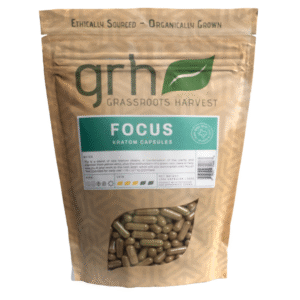Looking at natural and plant-based items to alleviate common ailments has become a popular trend as of late. People turn to kava or kratom and even look for the best CBD products on the market. What do all of these have in common? They are made using plants! Most people have a general understanding of what CBD is and what it can do – what about kava vs. kratom?
Kava is a tropical herb known for the potent calming effects it has on the central nervous system. The kava plant (Piper methysticum) is found in the Western Pacific Island regions of Fiji, Polynesia, and others. The substances created from kava are created using the plant’s root, not the leaf like kratom products.
Kava works through the GABA receptors in the body through kavalactones. Each kavalactone may have a different effect on a person. Still, it is how it interacts with the GABA receptors in the body that determine the overall effect on someone. Kava is often found in capsule or powder formed products.
Interesting kava fact – kava is the only plant in the world that does not produce a seed. The strains used today are essentially the same strains used in the past because they are all copies of the original plant strains, which indigenous cultures have spent centuries keeping alive!

Kavalactones matter, meaning that they determine the strain of kava – heady, balanced, or heavy. Looking into the primary kavalactones prominent in each strain provides a look into the side effects or benefits one might encounter with kava.
Heady – Heady strains of kava contain a higher concentration of kavain and yangonin, producing a more “heady” or cerebral, uplifting, and cheerful effect in users. Most of the heady varieties are recommended for day-time use, keeping your mind clear and alert without the other stimulant-like qualities that may make it difficult to function. Consumers prefer the heady strain during stressful situations and when creative work is required.
Balanced – The middle ground between extremes is the balanced kava strain. Balanced is also the most versatile of the kava strains because it can be used for day-time or night-time use, depending on the dosage. Balanced also offers a great starting point for kava beginners.
Heavy – Heavy kava strains have a higher concentration of dihydrokavain, dihydromethysticin, and methysticin. They are “heavy” because their primary effect is sedating and often targets the body instead of the mind. The kavalactones within a heavy strain promote a deeper relaxation level than other strains, meaning you might use this type of product at night (not recommended for socializing or productivity in the workplace).
Also hailing from a tropical climate, kratom is another plant that hails from the world’s Southeast Asia region. Unlike its kava cousin, kratom does produce seeds, which is how it repopulates the different strains available – white, red, green, and yellow vein strains. The primary component of kratom that creates the bodily effects are alkaloids. Alkaloids are natural substances that affect the human body – nicotine, morphine, and others are examples of alkaloids we encounter regularly.
White vein – provides a more sedative effect without the stimulant
Red vein – more stimulating with less sedation quality
Green vein – the balance between red and white (not too sedative, and not too stimulating – just right)
Yellow vein – a term used when different vein strains are combined to make another type of kratom
Almost any kratom strain helps deal with discomfort and can even be used as an exercise supplement. Herbs like kratom and kava are not FDA regulated, meaning that there is no recommended safe dosage of the herbal substance. There is a process of gradually increasing these two plant-based substances’ dosages until the “sweet-spot” has been found.
At this point, you might think kava vs. kratom, what’s the big deal? Both of these are herbal, come from plants, and hail from tropical islands. There is a difference between kava and kratom. You have to be educated about each to make the right decision on usage.
|
Metric |
Kava | Kratom |
|
Origin |
Western Pacific Islands: Fiji, Samoa, etc. | Southeast Asia: Thailand, Indonesia, etc. |
|
Active Components |
Kavalactones | Alkaloids |
|
Pharmacology |
GABA-Receptor Binding |
Opioid Agonist |
| Preparation | Made from the dried root | Made from dried leaves |
When it comes to using kava, kratom, or CBD products, the most important thing to remember is to purchase from a reputable retailer and be responsible. There are differences in the way that kava and kratom may affect the body, making the education a little more imperative on the topic.
The bottom line for use with any natural substance (kava, kratom, CBD) – discuss it with your medical provider before making any decisions on consumption. There is limited scientific research on these types of substances. If used incorrectly, they may lead to serious side effects. If you are unsure about dosing or any other aspect of natural herbals in your life, a licensed medical professional is a place to start.
Using the kava and kratom differences to determine the best one for use may depend more on the active components, the pharmacology, and how it works. Just remember that every person is different, so you can’t expect your body to metabolize kava the way another person’s did. Start gradually before diving into the world of kava vs. kratom products!



